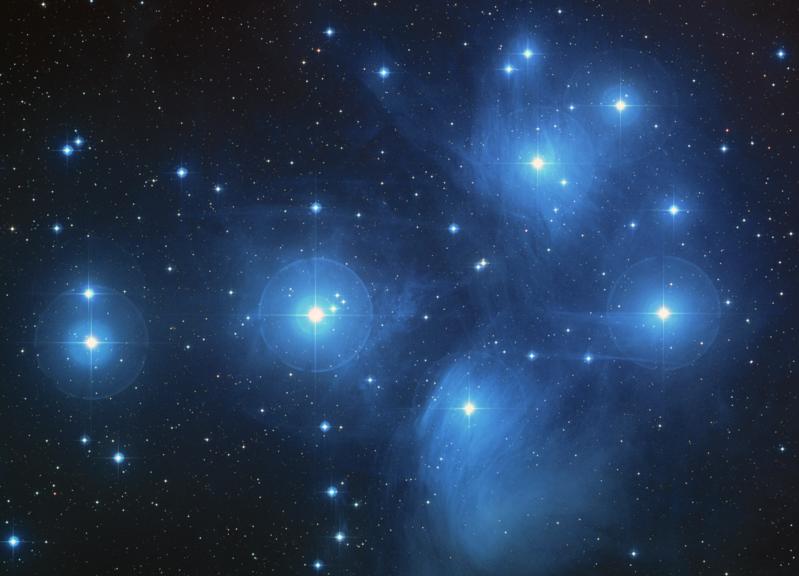Open Clusters

Credit: HST/NASA
An open cluster is a group of tens or hundreds of stars which are loosely held together by gravity. The stars in an open cluster slowly move away from each other over time. In contrast, stars in globular clusters are held very tightly together. There are around 1500 open clusters in the Milky Way.
Many of the stars in open clusters are massive, bright, blue stars. The stars in open clusters are often less than a few hundred million years old. This is very young for a star. So we only find open clusters in places where stars are forming. This includes spiral galaxies and irregular galaxies.
All the stars in an open cluster formed at about the same time. They also formed from the same cloud of gas and dust. This means they had the same initial chemistry. This knowledge lets us make an assumption. Any differences between the stars in the same cluster must be due to the mass of each star. Stars in one cluster can vary in brightness, colour, and length of lifetime.
In young clusters, some of the gas clouds that the stars formed from may remain around the stars. The young stars give off radiation which lights up the gas in the cloud. This creates a glowing nebula, like the Horsehead Nebula in the constellation Orion. When the cloud glows in this way it is known as nebulosity.
Examples of open clusters include M25, M44 (the Beehive), and M45 (the Pleiades).
The Swiss astronomer, Robert Trumpler came up with a system to classify open clusters. The system uses these 3 properties:
- how concentrated the stars are (I = strongly concentrated, IV = loosely concentrated)
- the range in stellar brightness (1 = small, 3 = large)
- how rich in stars the cluster is (poor, medium, or rich)
An additional n is given if the cluster shows signs of nebulosity.
Using this system, the Pleiades are I3rn. Strongly concentrated with a large range in brightness, richly populated, and containing nebulosity.

